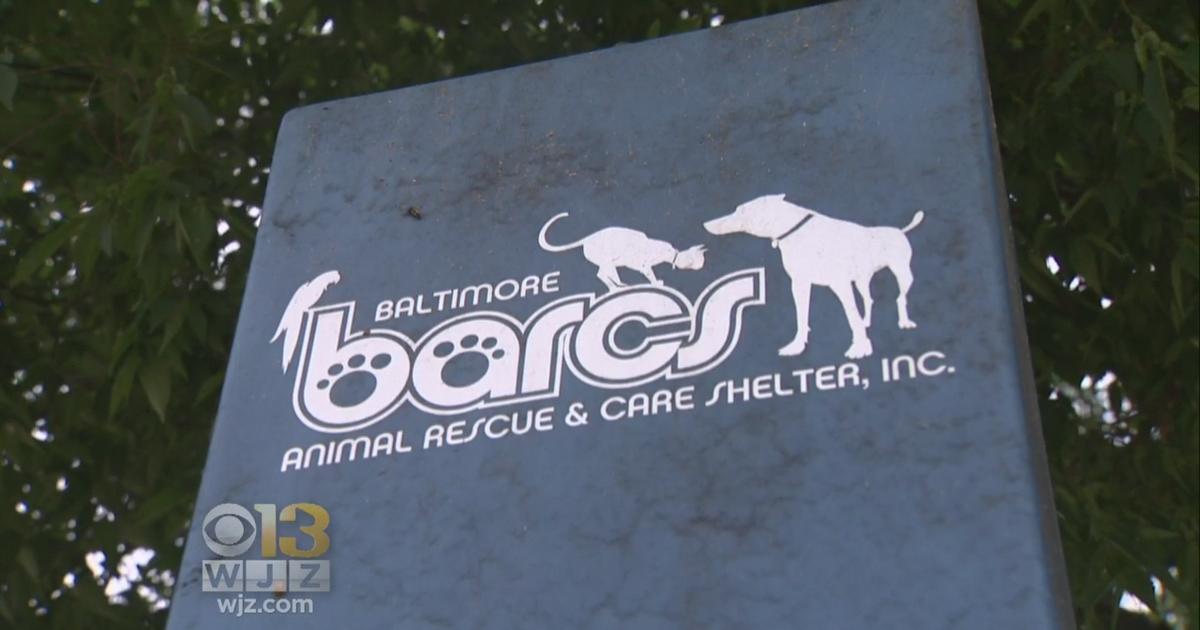Coastal Harm From Invading Saltwater 'Happening Right Now' Along East Coast
COLLEGE PARK, Md. (AP) — Four Native American tribes on Louisiana's Gulf Coast requested United Nations assistance this year to force action by the U.S. government on invading salt. Their formal complaint cited "climate-forced displacement'' and said saltwater had poisoned their land, their crops and their medicinal plants.
"That strips us of not only being able to generate an income to provide for ourselves, it also strips us of our ability to feed ourselves healthy,"
Shirell Parfait-Dardar, chief of the Grand Caillou/Dulac Band of Biloxi-Chitimacha-Choctaw, said in an interview.
The tribes' plight offers an extreme example of a lesser-known but fast-growing impact in the climate crisis: saltwater intrusion.
The landward movement of seawater threatens drinking water supplies, coastal farming and coastal ecosystems. Rising seas, more frequent storms, higher tides, drought and the pressure of pumping for drinking water are combining to accelerate the salt invasion.
New scientific research along the East Coast and in California shows measurable and sometimes startling change, much of it from saltwater's unseen advance beneath the surface. The threat is widespread; roughly 40% of Americans live in coastal counties, according to the National Oceanic and Atmospheric Administration.
"It's not something that we need to wait until 2050 or 2100 for. It's not something happening only to polar bears. It's happening right now," said
Marcelo Ardon, an associate professor of ecology and biogeochemistry at North Carolina State University who is documenting changes in North Carolina's coastline.
The cascading consequences of saltwater intrusion were starkly revealed in interviews with more than 100 researchers, planners and coastal residents, along with soil testing, drone footage and analyses of well-sample data conducted by the Howard Center for Investigative Journalism.
Among the Howard Center's findings:
— Thousands of acres of farmland have gone out of production as salt imparts its ruinous properties to croplands. A single county in southern Maryland has lost more than 2 square miles of farm-rich uplands while in California, planners in the fertile Central Valley are fighting to stem losses from historic salt deposits that already total 250,000 acres.
— Drinking water supplies in public aquifers and private wells from Long Island, New York, to the Florida Keys are increasingly threatened as some underground sources reach salinity levels nearly equal to seawater. In Miami-Dade County, Florida, homeowners and businesses can expect their water and sewer bills to rise 5% every year through at least the next decade, said Water and Sewer Director Kevin Lynskey.
— In South Florida, nearly one-third of 215 monitoring wells showed a five-year trend of increasing salinity with just 16 showing a downward salinity trend, according to a Howard Center analysis of U.S. Geological Survey test results. The problem is compounded by a massive saltwater plume radiating from the Turkey Point Nuclear Generating Station toward wellfields in the Biscayne aquifer that supply drinking water in the Miami area.
— Coastal wetlands, a buffer against more frequent storms and a sink to capture carbon, are fast disappearing. In Maryland, Blackwater National Wildlife Refuge already has seen 5,000 acres of wetland disappear. In Louisiana -- which loses nearly 30 square miles of coastal marsh yearly -- a study concludes that remaining wetlands could be gone within 50 years.
— "Ghost forests" of dead and dying trees are spreading along coastlines from New Jersey to the Gulf of Mexico as saltwater pummels from above and seeps in from beneath.
Along the Chesapeake Bay in Maryland and Virginia, once-verdant forests are being transformed into foreboding vistas of bleached-white tree skeletons engulfed by invasive plants.
In North Carolina along the Albemarle-Pamlico Peninsula, roughly 15% of a 65-square-mile area has changed recently from healthy forest into ghost forest, according to newly published research by Lindsey Smart, a research associate at North Carolina State's Center for Geospatial Analytics.
And on the Gulf Coast along the Suwannee River, which runs from Georgia to the Florida Panhandle, "The pines, oaks, cedars and palms have this orderly trajectory of death based on who can hack it in a saline environment and who can't,'' said David Kaplan, who heads the H.T. Odum Center for Wetlands at the University of Florida. "One of the last remnants are the palms … the last to go."
In one recent success, Blackwater National Wildlife Refuge in southern Maryland — a focus of researchers from around the world because of its rapid change — acquired over 3,000 acres for marsh migration.
The transaction pointed to the stakes as coastal lands rich in history disappear: Ten acres of a newly purchased parcel were the homestead of Ben Ross, father of Harriet Tubman, the abolitionist and underground railroad conductor who led the pre-Civil War escape of dozens of slaves.
THE INVISIBLE FLOOD
"It's an enormous change, immense," Emily Bernhardt, a Duke University ecosystem ecologist, said of saltwater's impacts. "Even as an expert on the topic, I have been shocked to discover the extent of coastal forests lost to sea-level rise and saltwater intrusion over the last several decades."
Yet, the Intergovernmental Panel on Climate Change, the United Nations scientific body established to study the warming climate and prepare for change, observed in a report last year that information is lacking.
In September, the National Science Foundation awarded University of Maryland agroecologist Kate Tully and her partners a $4.3 million grant to study saltwater intrusion — a measure of scientific concern about the problem.
In a TEDx talk she delivered in September, Tully said that "many people are unaware, but there is an invisible flood moving far inland in advance of the surface floods that can drown our homes."
She added in an interview: "We can't in the short term stop the seas from rising, but we can manage this transition intelligently and do it in a coordinated way. But we have to have buy-in from farmers, from the communities and from local governments. And the solutions need to be science-based."
Said Duke's Bernhardt: "These salty fields and dying forests are happening throughout rural coastal areas, which are often economically disadvantaged. I worry about whether farmers and landowners in these communities will have the resources needed to adapt to the changes already occurring."
'LIKE THE EARLY STAGES OF CANCER'
Saltwater intrusion also is a threat to lands inland.
"It's the sleeping giant of most semiarid regions on the planet," Wesley Danskin, a research hydrologist at the USGS in California, said of troubles stemming from salt.
Salt is a significant threat in the farm-rich Central Valley of California. Local agencies are implementing plans to balance overdrafted aquifers — critical water supplies that are prone to saltwater intrusion.
"If those aquifers are not recharged and restored, eventually you won't have any agriculture," said Marc Del Piero, an expert in water law who once sat on the state's Water Resources Control Board.
Proponents say recharging aquifers by putting freshwater back into them will preserve agriculture in California. But the path to sustainability is laden with sacrifice.
Over the next 20 years, farmers in California may have to fallow anywhere from 500,000 to 1 million acres of farmland due to a decreased water supply, according to estimates by the Public Policy Institute of California.
"It's like the early stages of cancer," said Daniel Cozad, executive director of the Central Valley Salinity Coalition, an alliance of public agencies, nonprofits and private interests. "You don't feel it, you don't see it and everything seems to be pretty normal. But if you're not keeping track of it, it can get much worse."
WETLANDS AS CARBON SINKS
Coastal wetlands and mangroves increasingly inundated by saltwater are some of the world's most effective carbon-storage ecosystems. They capture carbon dioxide — the primary greenhouse gas from human activities — and permanently store it, preventing it from entering the atmosphere.
Many nations are looking ahead to the time of a functioning global carbon market that enables countries and corporations to meet emission-reduction goals by buying credits that, in effect, invest in carbon-cutting projects elsewhere.
President-elect Joe Biden is being pressed to move toward establishing a price on carbon, a politically divisive step. His transition team already has received a set of proposals that includes establishing a "carbon bank" in the Department of Agriculture for paying farmers and landowners to store carbon.
"It's a system that has the potential to be managed," said Ken Krauss, a USGS research ecologist who is working with foreign partners. "Over time, if we can figure out how to do it, you can manage these forests to make them more or less tidal to potentially sequester more carbon and store it long term."
From NOAA satellite data, Elliott White Jr. in Virginia's Plant Ecology and Remote Sensing Lab calculated that coastal regions from Maine to Texas had experienced a net loss of 5,387 square miles of coastal and river swamps in a 20-year period from 1996 to 2016.
White said that with saltwater advancing through rivers and groundwater, forests inland will experience similar loss in diversity and loss in size.
"Swamps, despite people always wanting to drain them, are important for cultural reasons,'' he said. Throughout history, swampy coasts have offered refuge for people in need of it, among them enslaved people and Native American tribes. Cajun culture sprouted where the Acadians settled in the swamps of southern Louisiana.
"People should care because if we lose these wetlands, we're losing a multitude of things," White said.
Along the Louisiana coast -- where a football field of land is being lost every 100 minutes -- the tribes threatened with relocation have yet to hear an answer from the United Nations.
On the Grand Caillou/Dulac Band of Biloxi-Chitimacha-Choctaw land, Chief Parfait-Dardar said saltwater has killed trees, which leads to more erosion, while destroying community gardens.
Saltwater intrusion, she said, "affects everything. … It's all working in one big circle and it's quite heartbreaking to watch."
___
The Howard Center in the Philip Merrill College of Journalism at the University of Maryland is funded by $3 million from the Scripps Howard Foundation. It honors Roy W. Howard, one of the newspaper world's pioneers.




